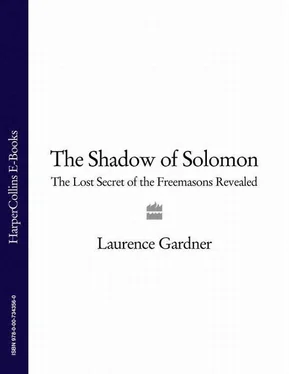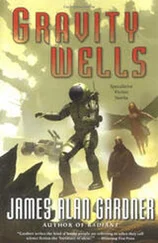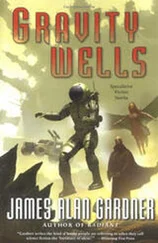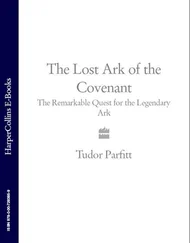In the course of occasional Society arguments, certain important discoveries were shelved and ultimately forgotten—a good example being Robert Hooke’s 1662 marine chronometer for determining longitude. Consequently, a century later, the research was begun again from scratch by the Yorkshire joiner John Harrison. He achieved his result knowing nothing of Hooke’s original design, which was not rediscovered until 1950 in the library of Trinity College, Cambridge. 11
In contrast, however, there were times when the Fellows would leap to each other’s aid. On one occasion, Christopher Wren was specifically asked to submit the result of an experiment concerning the incubation of chickens’ eggs but, owing to more pressing commitments, he failed to comply. Nevertheless, Hooke told the President that he had indeed received Wren’s submission in part, and he covered for his friend by verbally concocting a most plausible temporary report.
The worst disputes arose by virtue of Robert Hooke’s salaried employment as the Society’s Curator, whereas the other Fellows were all fee-paying members. Because of his specifically defined occupation, it was Hooke’s role to conceive and progress all manner of experiments, passing them over to others for completion, and then helping them when necessary. The problem was that it often became a matter of debate as to who could actually claim credit for any resultant discovery or invention.
In February 1665, Samuel Pepys described in his diary a particular Society meeting at which Hooke (then aged 30) lectured on the nature of comets, proving with dates and examples that comets are periodic. At that time there was a nine-year-old boy living nearby in Shoreditch. His name was Edmund Halley, and he grew to become one of the most famous astronomers of all time—the Astronomer Royal no less. However, for all his great accomplishments and deserved status, Halley is most popularly remembered for announcing in 1704 that comets are periodic, long after Hooke was recorded by Pepys as pronouncing the very same.
In his 1665 book of microscopic studies entitled Micrographia, Robert Hooke commented on the concentric bands of coloured light which appear around the central area of a tight air-space between two sheets of transparent mica pressed together. From his studies in light waves, he determined that the rings were the result of interference, and that they occur when the separation between the surfaces is of the same order as the wavelength of light. Meanwhile, there was a young fellow studying for his bachelor ‘s degree at Cambridge named Isaac Newton. Many years later, Newton commented on these very same light bands, and today they are known as Newton’s Rings. 12
Long before Isaac Newton came into the group’s philosophical arena, Robert Hooke began the first specifically defined research into gravity. Setting a pendulum swinging, he noted that the wider the commencing arc, the longer it took to come to a halt. But why should it come to a halt at all and what force was it that drew the pendulum gradually, through decreasing arcs, to an eventual standstill? The answer was, of course, gravity—a subject which Robert was destined to pursue, for it baffled him that everything pulled or fell downwards, except for the stars which remained in their suspended positions. There had to be scientific laws which determine the nature and function of earthly weight, or the apparent lack of it in the heavens.
Hooke’s Micrographia is one of the greatest scientific volumes ever published, and without doubt the foremost of all works concerning microscopy and biological research. But it was not limited to views through a microscope; there were telescopic observations of the moon and stars, descriptions of his newly invented thermometer, his barometer, his wind gauge and a hygrometer for measuring atmospheric humidity. He distinguished heat from burning, citing that burning ceases when oxygen expires no matter how much heat is applied, and put forward an abundance of revelatory material which brought proven science firmly out of the vague philosophical arena in which it had existed for so long.
This then was the operative scientific world of the Rosicrucian brotherhood in England. In terms of ultimate achievement, however, the Society’s heyday was far from over, and the greatest of all scientists, Isaac Newton, was yet to appear on the scene, 16 years before the 1688 Revolution.
While Samuel Pepys battled to resurrect a Navy that had fallen into decline during the Cromwellian era, John Evelyn and King Charles prepared a paper concerning plans to improve the environment. Both were troubled by the amount of grime and smoke which enveloped the narrow streets of London, and they called their scheme Fumifugium. But the politicians, with their out-of-town estates, were not remotely interested in the welfare of the city dwellers—only in the revenue derived from them—and so the scheme came to nothing. As it transpired, a little time and thought applied by the reluctant authorities at that stage might have prevented the great disasters which followed soon afterwards.
The poverty ensuing from the harsh Protectorate remained evident in the 1660s, with the towns and cities in a state of filth and decay, while the Whig aristocracy had built themselves fine country mansions with public money. Then came the long, hot summer of 1665, bringing with it the worst of all dreaded diseases: bubonic plague. Pepys recorded that it began in the June when he saw some houses in London’s Drury Lane marked with red crosses and the plea written on their doors, ‘Lord have mercy upon us’. By August, thousands were dying each week. Eventually, the Black Death (carried by rats and fleas) killed nearly 70,000 people in the capital alone—about 15 per cent of the population—as a result of which King Charles made another attempt to save the city. He sensed that another such summer, with severe electric storms, could so easily bring fire to the crowded timber structures that lined the streets and lanes of the capital. He approached the city authorities and gave them express permission to pull down strategically located buildings to create fire breaks, but nothing was done and the consequence was a major calamity.
Again it was Samuel Pepys who gave the news to the King and his brother James, Duke of York, after he had seen a fire spreading on 1 September 1666. He recommended, just as Charles had already suggested, that buildings must be demolished around the fire without delay. But it was too late and the blaze was already moving at an incredible rate. Subsequently, Pepys found the Lord Mayor skulking in Canning Street, knowing the disaster was his fault. With smoke and flames pouring through the alleys and billowing to the sky, King Charles became the director of operations. Hose-in-hand, he laboured among the soldiers and firemen, while his brother James organized the clearing of crucial areas to prevent an outward spread of the conflagration. In the event, however, it was a lost cause and 100,000 residents were made homeless. 13
Through some fluke of circumstance, Gresham College and its precious library were spared, but its facilities were temporarily lost to the Royal Society. In order that the merchants and businessmen could maintain the trading economy of London, the College became an interim Royal Exchange. Hence, the Fellows’ research activities were curtailed for a time and the alchemical crucibles were placed on the back burner.
To mark the Great Fire of London as a constant reminder for the generations to come, Robert Hooke designed and built the 202-ft Doric-style Monument (the tallest of its kind in the world) in Fish Hill Street, close to where the fire started, and where the edifice remains a popular visitor attracton ( see plate 25). Given the nature of the Royal Society’s cause, however, Hooke also contrived a practical purpose for the Monument, designing it with an internal spiral staircase to double as an astronomical viewing station. 14
Читать дальше












